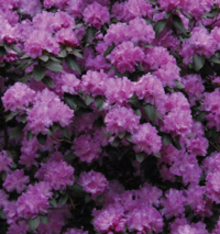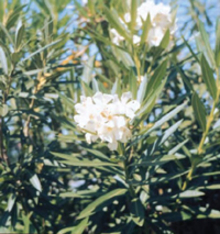Quick facts
- Foxglove, rhododendrons, oleander and Japanese yew are deadly to horses.
- Be able to identify these plants and avoid placing them near animals.
- About 0.1 percent bodyweight of Japanese yew leaves may be lethal to a mature horse.
- Often, death occurs before treatment of toxicity is present.
Identifying
-
Matures to 2 to 6 feet in height
-
Leaves are usually oblong, hairy and have shallow, irregularly-toothed margins
-
Hanging, tubular flowers can be pink, yellow, purple or white with a spotted pattern
-
Is a biennial, lives for two growing seasons
Where is it found?
Foxglove commonly grows throughout the United States. You can find foxglove around homes and other sites where someone once planted it as an ornamental. Foxglove grows best in slightly acidic, moist soils. It can spread to nearby pastures, meadows and ditches.
-
Moderately-sized shrubs
-
3 to 6 feet in height
-
Typically flower in spring
-
Flowers can be red, pink, lavender, yellow or white
-
Narrow leaves
-
Is a perennial shrub or small trees
-
Rarely propagate and spread on their own in Minnesota
Where is it found?
Rhododendron commonly grows throughout the United States. It does best in partial shade and moist, acidic soils high in organic matter. Rhododendron is usually intentionally planted.
-
Grows as a shrub or small tree
-
Thick and leather leaves
-
Flowers are showy and grow in large clusters
-
Flowers are white or any shade of pink or red
-
Won’t over winter in Minnesota, but are common house plants
Where is it found?
Oleander is a common ornamental in the Southern United States, but can’t over winter outdoors in Minnesota. Oleander is grown as a houseplant or in outdoor containers during the summer months.
-
Fine-textured evergreens
-
Is a perennial shrub or tree
-
Needles are light to yellow green in spring and mature to dark green
-
Can grow into trees up to 50 feet high
-
Common ornamental evergreen
Where is it found?
Japanese yew commonly grows throughout the United States. Japanese yew can grow in shade or sun and does best in fertile, well-drained soil with access to consistent moisture. Japanese yew is usually an intentionally planted landscape shrub.
Toxicity
Foxglove, rhododendron and oleander share a common toxin, cardenolides. These chemicals cause heart problems that lead to death in horses. Seeds have up to 480 micrograms of toxin per kilogram dry weight.
Toxicity can occur in livestock after they eat 0.05 to 0.7 grams of fresh or dried Japanese yew leaves per kilogram of bodyweight. About 0.1 percent bodyweight of leaves may be lethal to a mature horse.
These toxins are usually highest in the fruit, flowers and immature leaves. The mature leaves of flowering plants have lower toxin levels. The palatability of the toxin is low so toxicity more commonly occurs when other forage is scarce or the plants are in hay. Exceptions have occurred after a frost or when trimmed or pruned leaves were made available to animals.
Animals may be found dead. Most animal species are prone to toxicity from these plants. Signs from the toxin may not occur for up to 12 hours after eating the plant material. Signs include:
-
Profound weakness
-
Horses may not be able to raise their heads
-
-
Swelling of the head, lips and eyes
-
Strong and slow heartbeat that often becomes irregular
-
Terminal seizures may occur
-
Japanese yew toxicosis may show a trembling or quivering just before they drop to the ground
Often, treatment isn’t possible due to the speed at which death occurs. Remove the plant source from the horse. Treatment with charcoal and then mineral oil is suggested.
The focus of treatment is normally the heart. Atropine, lidocaine, phenytoin, and other cardiac drugs may be indicated depending on the cardiac abnormality present at the time.
Control
Avoid introducing foxglove as an ornamental near horses. Using gloves, pull flowering plants before seeds develop to reduce the seed bank. Several herbicides can help control foxglove.
Avoid planting Japanese yews and rhododendron where horses will have access to them. You can cut down or dig out unwanted plants. Plants cut to the ground generally don’t re-sprout, but you can use a labeled herbicide on the stump. Carefully read and follow all instructions on herbicide labels.
Don’t feed clippings from oleander to horses or any other livestock.
Other information
Be able to identify these plants and exercise extreme caution when pets and humans are near these plants, especially oleander.
Never place these plants where animals can contact them. Take extra care in cases where leaves can fall into a pasture.
Don’t place decorative Japanese yew wreaths on stall doors or fences.
Reviewed in 2021






